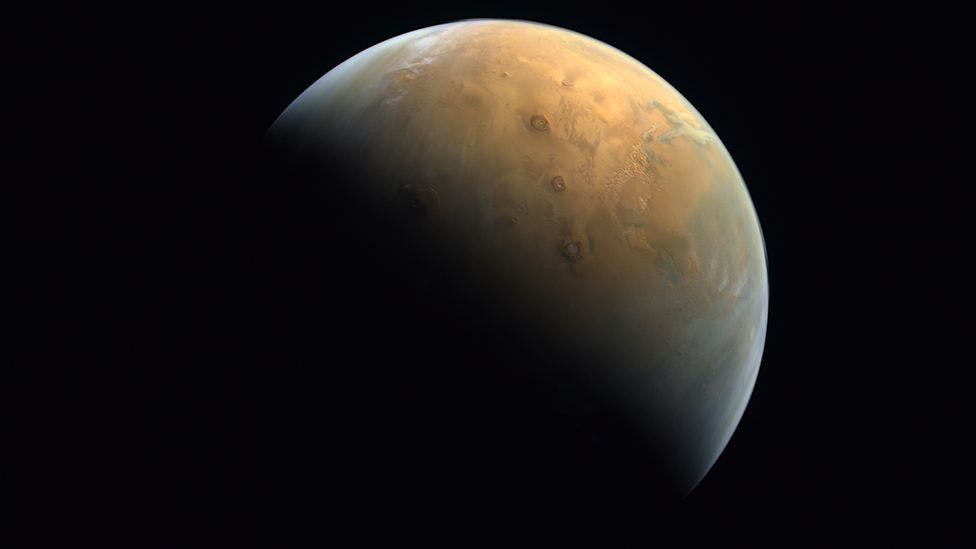

The COMPASS study mission design results are summarized in Table I. Additional mission analysis indicated that a duplicate NEP stage, using the same 1.9-MW(electric) nuclear power system and electric propulsion (EP) thrusters-but without the chemical stage-could perform precursor cargo missions delivering payloads of about 200 t to Mars after a LEO spiral and 535-day one-way Mars trip.

The COMPASS studies evaluated multiple crewed mission opportunities spanning 2035 to 2042 that utilize (1) a low Earth orbit (LEO) aggregation orbit, (2) an uncrewed LEO–to–near rectilinear halo orbit spiral where the NEP vehicle rendezvous with the deep-space crew habitat, and (3) a 760-day opposition-type round-trip mission that includes a 30-day Mars stay. The NEP stage performs the interplanetary transfers and Earth capture. The chemical stage uses two 15-klbf liquid oxygen and liquid methane (LOX/LCH 4) engines to perform the high-thrust burns at Earth departure, Mars capture, and Mars departure. Mission studies conducted by the NASA Glenn Research Center (GRC) COMPASS Team identified the need for a 1.9-MW(electric) power system to perform a 2-year round-trip crewed mission to Mars using a hybrid nuclear electric propulsion (NEP) and chemical propulsion vehicle, as shown in Fig. The paper includes preliminary development strategies that could bring the NEP technology to fruition for Mars missions in the late 2030s or early 2040s.

The initial results suggest that a modified terrestrial microreactor combined with supercritical CO 2 Brayton conversion could be used to perform the crew and cargo missions with satisfactory performance and modest risk. The nuclear power team completed trade studies to evaluate different reactor and power conversion technologies and developed preliminary concepts for the crew shielding, waste heat radiators, and PMAD. This paper presents the results of trade studies and concept development for the nuclear electric power system, consisting of the fission reactor, radiation shielding, power conversion, heat rejection, and power management and distribution (PMAD). Department of Energy are performing analyses and generating concepts for crewed nuclear electric propulsion (NEP) missions to Mars. Under the Mars Transportation Assessment Study, NASA and the U.S.


 0 kommentar(er)
0 kommentar(er)
